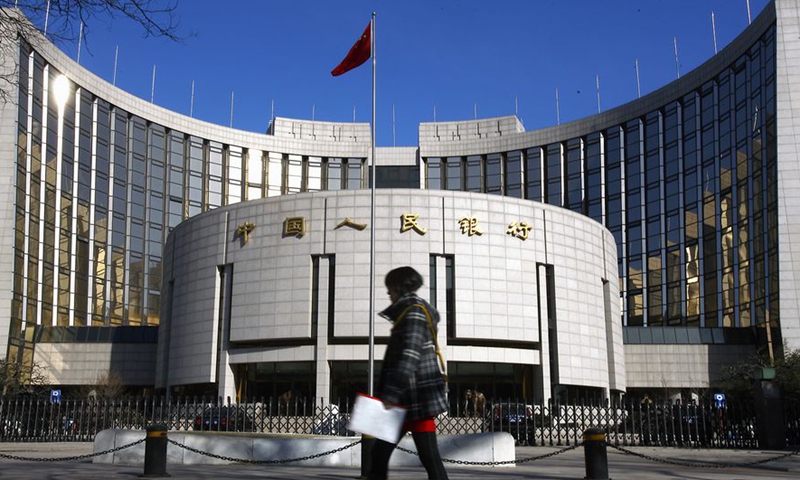
A file photo shows a pedestrian walks past the headquarters building of the People's Bank of China in Beijing, capital of China. (Xinhua)
China's new bank lending in October exceeded market estimates, with a notable highlight from a return to growth in longer-term loans to households, official data showed on Wednesday, offering an overall upbeat outlook for continued financial support for the real economy.
New yuan loans came in at 826.2 billion yuan ($129.27 billion) in October, an increase of 136.4 billion yuan from a year earlier, according to data from the People's Bank of China (PBC), the country's central bank.
The figure beat estimates of 800 billion yuan.
M2 broad money supply grew by 8.7 percent year-on-year during October, with the rate of growth quickening 0.4 percentage points from the prior month. The M2 growth reading was still down 1.8 percentage points on a yearly basis.
As for aggregate social financing, the October reading undershot expectations to hit 1.59 trillion yuan, but it was still up 197 billion from the prior year and up 721.9 billion from the comparable 2019 level, per PBC numbers.
The extension of yuan loans into the real economy jumped 775.2 billion yuan, up 108.9 billion yuan year-on-year.
The numbers reversed a year-on-year decline in both new yuan loans and social financing for September, allaying concerns over tighter bank lending.
In an encouraging sign, medium- to long-term lending to households, mostly in the form of mortgages, increased 422.1 billion yuan, the PBC figures showed.
Longer-term household debt gained 4 percent year-on-year in October, snapping a five-month streak of declines, and in part indicating a marginal easing in the central bank's stance on short-term housing lending policy, the Zhixin Investment Research Institute said Wednesday in a report sent to the Global Times.
Nonetheless, in light of rising inflation, market observers see little chance of further easing. The consumer price index jumped 1.5 percent in October, the first uptick in nearly five months, while the producer price index scaled to a fresh record of 13.5 percent, official data also showed Wednesday.
Higher consumer inflation and elevated producer inflation reduce the probability of a central bank policy rate cut, Nomura economists said in a research note sent to the Global Times on Wednesday, speaking of policy implications from higher prices.
Moreover, the PBC on Monday rolled out a new lending tool for carbon reduction as part of efforts to meet the country's carbon neutrality goal.
Under this system, 60 percent of the loan principal extended by financial institutions for carbon-emission reductions will have a one-year lending rate of merely 1.75 percent.
This was considered to have reduced the leeway for more easing.




